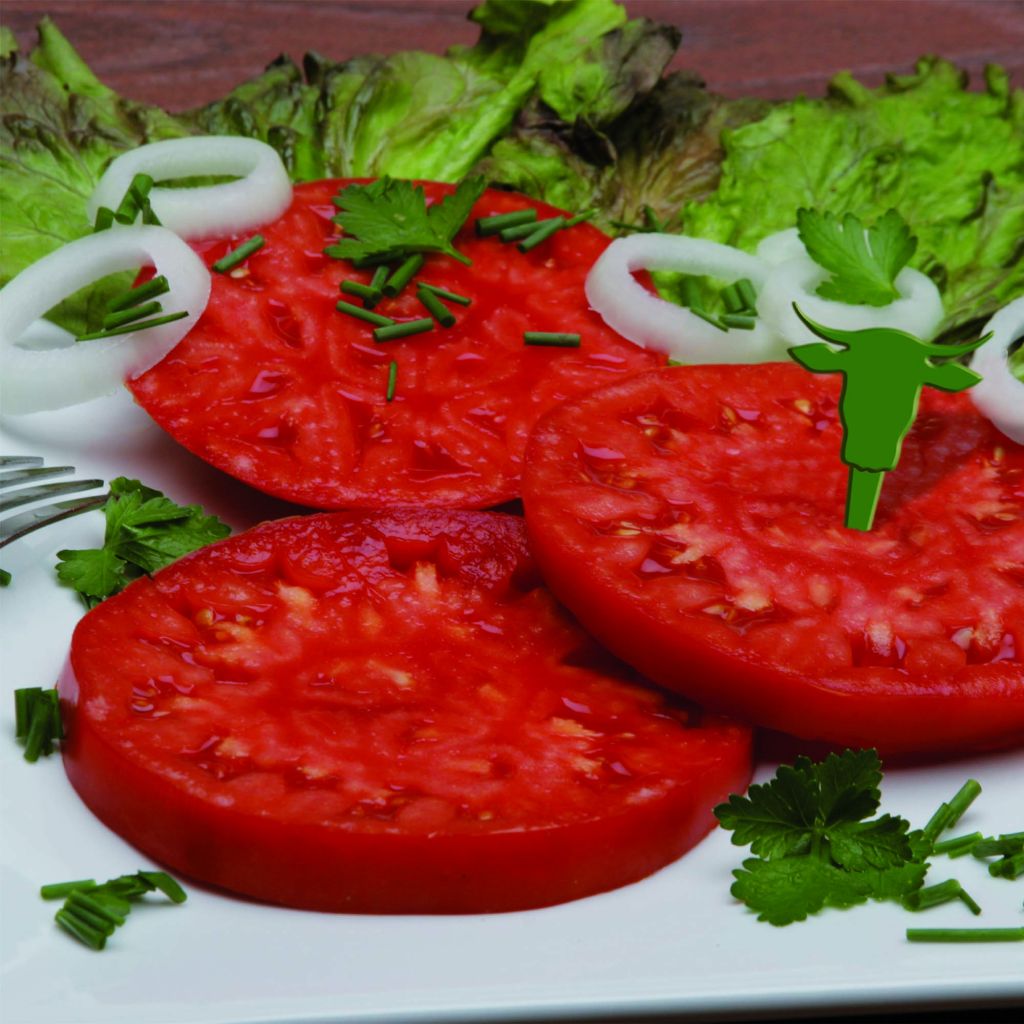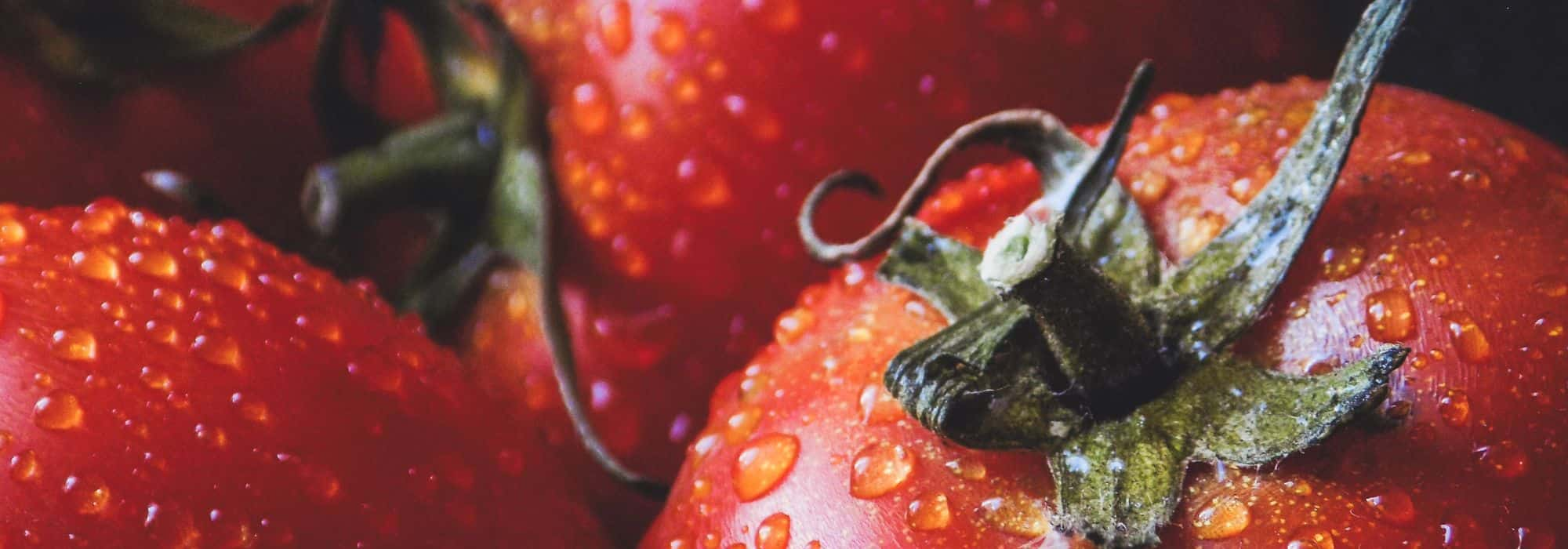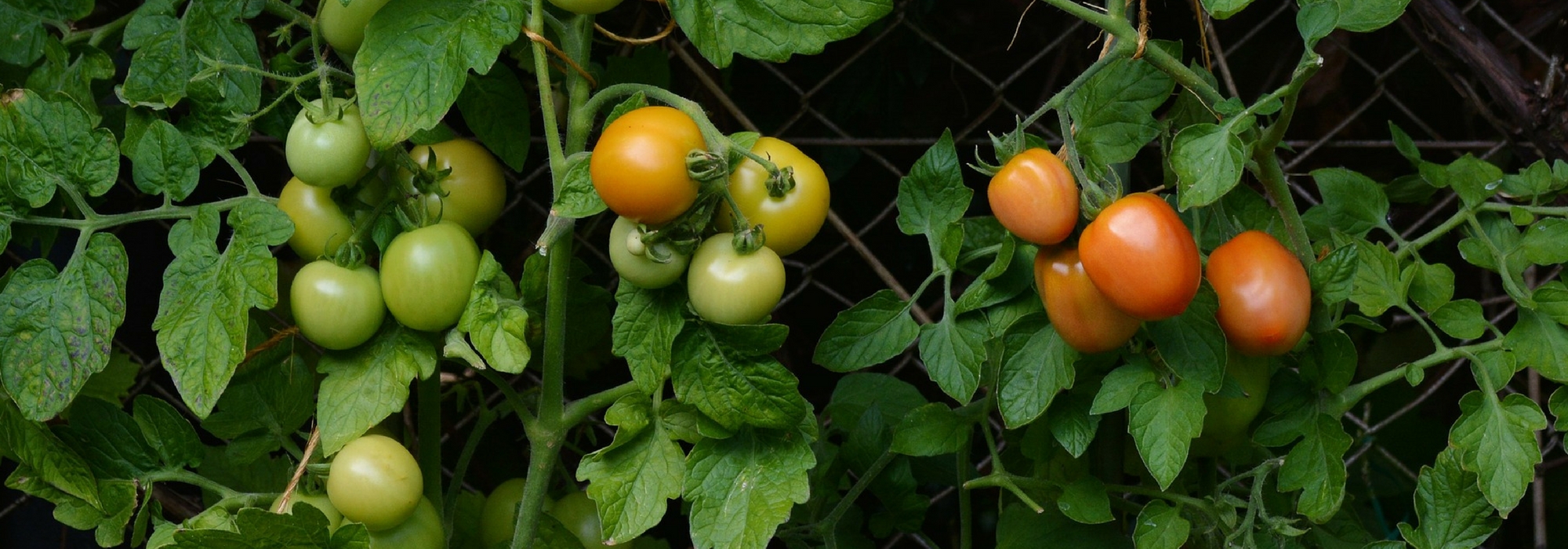

Tomato Buffalo Steak F1 Plants
Tomato Buffalo Steak F1 Plants
Solanum lycopersicum Buffalo Steak F1
Tomato
Nicely fleshy and deep red tomatoes, just the way we like them. The yield is average. The taste is quite neutral.
Carole A., 29/10/2022
Special offer!
Receive a €20 voucher for any order over €90 (excluding delivery costs, credit notes, and plastic-free options)!
1- Add your favorite plants to your cart.
2- Once you have reached €90, confirm your order (you can even choose the delivery date!).
3- As soon as your order is shipped, you will receive an email containing your voucher code, valid for 3 months (90 days).
Your voucher is unique and can only be used once, for any order with a minimum value of €20, excluding delivery costs.
Can be combined with other current offers, non-divisible and non-refundable.
Home or relay delivery (depending on size and destination)
Schedule delivery date,
and select date in basket
This plant carries a 6 months recovery warranty
More information
We guarantee the quality of our plants for a full growing cycle, and will replace at our expense any plant that fails to recover under normal climatic and planting conditions.
Description
The 'Buffalosteak' Tomato is a variety that produces huge fruits, weighing on average over 300 grams. They are ruby red and ribbed and their flesh is very tasty. They are versatile and can be eaten raw or used to make sauces, juices, or soups, as their flavour is rich and aromatic. The plants are very vigorous and you will need to stake them quickly to prevent them bending under the weight of their fruit. Plant your plug plants from April to June after the last frost when the plants have reached about fifteen centimetres. The 'Buffalosteak' Tomato is harvested from July to October.
NB: This variety is labeled 'F1' for "F1 hybrid" as it is a variety resulting from the cross-breeding of carefully selected parents to combine their qualities. This results in a variety that can be particularly flavourful and/or early while being resistant to certain diseases. Sometimes criticized or wrongly associated with GMOs, F1 hybrid plants are useful for their uniformity and resistance, but unfortunately, their qualities do not pass on to subsequent generations, so it will not be possible to recover the seeds for later sowing.
The tomato is native to South America and Central America. Several varieties were cultivated by the Incas long before the arrival of the Conquistadors. We are still amazed by the genetic diversity of this plant. The term tomato comes from the Inca word 'Tomatl' and refers to both the plant and the fruit it produces. There are fruits of all colours, except perhaps blue, and of all shapes and sizes. The tomato is one of the many foods that came to us from the New World, along with beans, corn, squash, potatoes, and chilli peppers. It was cultivated for its aesthetic and medicinal qualities but thought to be toxic because it resembled the fruit of the Mandrake, another nightshade. It only became a regular part of our diet in the early 20th century.
The tomato plant is a perennial herbaceous plant in tropical climates, cultivated as an annual in our latitudes. It turns woody over time and produces small insignificant yellow flowers grouped in clusters that will produce fruits. Its fruit is very attractive and adds colour to the vegetable garden. It also has many nutritional benefits. It is low in calories, like most vegetables, and rich in water and it contains a very interesting molecule: lycopene, which is a powerful antioxidant. The longer the tomato is cooked, the more lycopene becomes available. It is also rich in vitamin C, provitamin A, and trace elements.
Harvesting: Buffalo Steak can bear fruit from July to October depending on the planting date and the climate and cultivation conditions (in a greenhouse or outdoors). There is no foolproof way to determine when a tomato has reached its full ripeness. The fruit should be picked when it is fully coloured and its texture is still firm, but shows a slight softening. For better preservation, you should pick the fruit with its stem.
Storage: Tomatoes should be stored at an optimal temperature of 10-15°C (50-59°F). They can be kept for a few days in the vegetable drawer of your refrigerator or spread out in the open air. However, refrigeration alters the taste of the fruit. To keep them longer, consider producing tomato confit, sun-dried tomatoes, sauces, frozen fruits, preserves, jams, or juices. We love to confit them because it's so simple and delicious: cut your tomatoes in half and collect the juice. Place your halved tomatoes facing upwards on the grill tray of your oven. Season with salt, pepper, and sugar, then bake at a very low temperature for at least an hour. Remove your tomatoes and consume them immediately or store them in a glass jar, covered with olive oil.
The gardener's tip: It is a good idea to grow several varieties of tomatoes each year to minimize the risk of complete crop loss due to climatic conditions or specific diseases. To counteract the phenomenon of 'blossom end rot' - not a disease but a calcium deficiency - spray a comfrey maceration rich in calcium on your plants.
Harvest
Plant habit
Foliage
Planting and care
First, grow on your 'Buffalo Steak' tomato plants by transplanting your plug plants into an 8 to 13 cm (3 to 5in) pot filled with good multi-purpose compost, without burying the graft point. Then place them in a very bright and heated location: the temperature should never drop below 12-14°C (53.6-57.2°F) or the foliage will turn yellow and the plant's growth will be disrupted. When the plants reach a height of about 15 cm (6in), they can be transplanted into the ground if the outside temperatures allow.
Soil preparation: Tomato plants are extremely easy to grow. Sunlight and warmth are crucial for the success of this crop, even though grafted plants are more tolerant to cooler growing conditions. They can thrive in any type of soil, but they prefer it to be rich and well-draining. If the substrate is too compact, you can add some sand to improve its texture.
Transplanting into the ground: Once all risk of frost has passed, usually after mid-May, you can transplant your plants into the ground. Choose the sunniest and warmest spots in your garden. The base of a south-facing wall is an ideal position. Loosen the soil and dig a hole that is at least 3 to 4 times the volume of the plant's root system. Add some well-decomposed compost at the bottom. Place your plant with the graft point at ground level and fill in the hole. Firm the soil, create a small basin around the base, and water generously. Be careful not to wet the leaves to protect your plants from fungal diseases.
Maintenance: Applying mulch around the base of your plants helps retain moisture and reduces the need for weeding. Tomato plants do not need a lot of watering, as their root systems can reach deep to find available resources. Only water generously during prolonged periods of drought. To protect the plants from diseases and insects, regularly spray plant infusions (nettle and comfrey). You can also use a copper-based Bordeaux mixture solution.
Cultivation
Care
Intended location
Planting & care advice
-
, onOrder confirmed
Reply from on Promesse de fleurs
Similar products
Haven't found what you were looking for?
Hardiness is the lowest winter temperature a plant can endure without suffering serious damage or even dying. However, hardiness is affected by location (a sheltered area, such as a patio), protection (winter cover) and soil type (hardiness is improved by well-drained soil).

Photo Sharing Terms & Conditions
In order to encourage gardeners to interact and share their experiences, Promesse de fleurs offers various media enabling content to be uploaded onto its Site - in particular via the ‘Photo sharing’ module.
The User agrees to refrain from:
- Posting any content that is illegal, prejudicial, insulting, racist, inciteful to hatred, revisionist, contrary to public decency, that infringes on privacy or on the privacy rights of third parties, in particular the publicity rights of persons and goods, intellectual property rights, or the right to privacy.
- Submitting content on behalf of a third party;
- Impersonate the identity of a third party and/or publish any personal information about a third party;
In general, the User undertakes to refrain from any unethical behaviour.
All Content (in particular text, comments, files, images, photos, videos, creative works, etc.), which may be subject to property or intellectual property rights, image or other private rights, shall remain the property of the User, subject to the limited rights granted by the terms of the licence granted by Promesse de fleurs as stated below. Users are at liberty to publish or not to publish such Content on the Site, notably via the ‘Photo Sharing’ facility, and accept that this Content shall be made public and freely accessible, notably on the Internet.
Users further acknowledge, undertake to have ,and guarantee that they hold all necessary rights and permissions to publish such material on the Site, in particular with regard to the legislation in force pertaining to any privacy, property, intellectual property, image, or contractual rights, or rights of any other nature. By publishing such Content on the Site, Users acknowledge accepting full liability as publishers of the Content within the meaning of the law, and grant Promesse de fleurs, free of charge, an inclusive, worldwide licence for the said Content for the entire duration of its publication, including all reproduction, representation, up/downloading, displaying, performing, transmission, and storage rights.
Users also grant permission for their name to be linked to the Content and accept that this link may not always be made available.
By engaging in posting material, Users consent to their Content becoming automatically accessible on the Internet, in particular on other sites and/or blogs and/or web pages of the Promesse de fleurs site, including in particular social pages and the Promesse de fleurs catalogue.
Users may secure the removal of entrusted content free of charge by issuing a simple request via our contact form.
The flowering period indicated on our website applies to countries and regions located in USDA zone 8 (France, the United Kingdom, Ireland, the Netherlands, etc.)
It will vary according to where you live:
- In zones 9 to 10 (Italy, Spain, Greece, etc.), flowering will occur about 2 to 4 weeks earlier.
- In zones 6 to 7 (Germany, Poland, Slovenia, and lower mountainous regions), flowering will be delayed by 2 to 3 weeks.
- In zone 5 (Central Europe, Scandinavia), blooming will be delayed by 3 to 5 weeks.
In temperate climates, pruning of spring-flowering shrubs (forsythia, spireas, etc.) should be done just after flowering.
Pruning of summer-flowering shrubs (Indian Lilac, Perovskia, etc.) can be done in winter or spring.
In cold regions as well as with frost-sensitive plants, avoid pruning too early when severe frosts may still occur.
The planting period indicated on our website applies to countries and regions located in USDA zone 8 (France, United Kingdom, Ireland, Netherlands).
It will vary according to where you live:
- In Mediterranean zones (Marseille, Madrid, Milan, etc.), autumn and winter are the best planting periods.
- In continental zones (Strasbourg, Munich, Vienna, etc.), delay planting by 2 to 3 weeks in spring and bring it forward by 2 to 4 weeks in autumn.
- In mountainous regions (the Alps, Pyrenees, Carpathians, etc.), it is best to plant in late spring (May-June) or late summer (August-September).
The harvesting period indicated on our website applies to countries and regions in USDA zone 8 (France, England, Ireland, the Netherlands).
In colder areas (Scandinavia, Poland, Austria...) fruit and vegetable harvests are likely to be delayed by 3-4 weeks.
In warmer areas (Italy, Spain, Greece, etc.), harvesting will probably take place earlier, depending on weather conditions.
The sowing periods indicated on our website apply to countries and regions within USDA Zone 8 (France, UK, Ireland, Netherlands).
In colder areas (Scandinavia, Poland, Austria...), delay any outdoor sowing by 3-4 weeks, or sow under glass.
In warmer climes (Italy, Spain, Greece, etc.), bring outdoor sowing forward by a few weeks.


















































